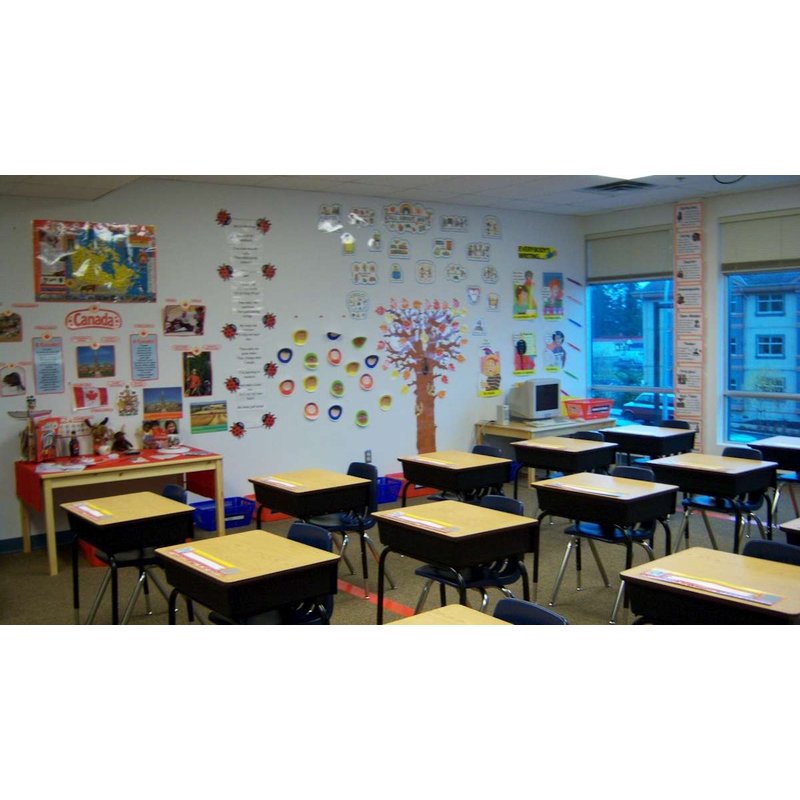This article is part of a column rumor detectorClick here for other texts.
to remember
Many studies measure different effects
Distinguishing between the effect of class size and the influence of other social and economic factors is complex
– A tangible impact appears to be evident at the beginning of primary school and among disadvantaged groups
Limited or difficult to measure effects
Hundreds of reports and studies have attempted to measure the effect of class size on academic performance, with widely varying results. This is because it is not enough to compare students’ scores in small and large classes. There are many other criteria to consider that affect learning, including:
- School context (more or less affluent neighborhood, cultural diversity, urban or rural environment, etc.);
- students’ age and grade level;
- the presence of students with learning difficulties, and in what proportions;
- type of education approved;
- Teacher training, experience and competence.
In addition, studies do not always clearly specify what is measured, between academic learning, academic success, or student outcomes, which complicates their analysis. At most, we find as measures, most of the time, students’ success in tests planned at different stages of their education or in standardized tests such as the Program for International Student Assessment (PISA).
The strongest effects are at the beginning of the primary stage
according to This study is French Published in 2006 by Thomas Piketty and Mathieu Valdenaire. The results are also documented in Commonwealth countries, from’union EuropeanAnd in the United States of America And in Canada, which goes in the direction of the positive effect of downsizing of groups, on academic success in the first three years of study.
The Cut class size in half (24 to 12 students) in primary school will result in an improvement in academic performance of between 20% and 30% at the end of the year, according to a review of nine studies published in France in 2017 by the Institut des public. Policies.
Similarly, in the United States, the effect of a randomized trial called “STAR” (Student/teacher achievement ratio experience) conducted extensively, indicates. More than 11,000 students were randomly assigned to small (about 15 students) or large (about 23 students) classes and were followed for five years, from 1985 to 1990. The experiment concluded that small classes significantly improved early learning, From kindergarten to third gradeNS general.
Clearer impacts on disadvantaged groups
Research also shows that reducing class size will have an effect The biggest positive effects in children vulnerable groups, from disadvantaged socioeconomic backgroundsor black children in the United States or those from single-parent families. in France,study By Thomas Piketty and Mathieu Valdenaire got twice the effect when considering children of socially disadvantaged origin, while in the United States, a study Published in 1999 Using data from the STAR survey, look for higher effects on poorer students and for black students.
In 2013, Norwegian researchers identified twice as strong the effects of Children from single parent familiesAfter I followed the students in school for 4 years in small classes.
Also in Quebec, a report The Champoux-Lesage Committee on School Board Governance, published in 2014, concluded that the effects of a decline in the number of students per group were more significant in disadvantaged areas, for students at the beginning of primary school, if the number of students per class was less than 20.
What are the effects on any success?
However, the effects on ‘success’ are difficult to measure due to the large differences in definitions of ‘academic success’ in particular. a The Quebec survey, along with a literature review, conducted in 2011, asserts that the decrease in the number of students per class has positive effects on, among other things, students’ socialization, behavior and class climate, but the implications for their academic performance remain unknown due to a lack of reliable data. That is, even if several reports, including those already cited, tend to favor the idea that in elementary school a smaller group made it possible to recognize learning disabilities early on.
a A meta-analysis of ten studies Published in 2018 by the Campbell Collaboration, an international nonprofit research network that publishes systematic reviews of the social sciences, it concluded that reducing class size has, in general, limited effects on the social sciences. Success: Close to zero, or slightly positive. These effects can actually only be felt under a very low threshold, from 15, or even 10, students in a class. However, the authors retained only studies measuring effects on language and mathematics, after one year in a small class.
In 2006, a The study was conducted in France She found that first-grade class size had little effect on students’ reading and spelling skills. However, smaller classes (10 to 12 students versus 20 to 25 students) improved the performance of French-speaking children and children of middle and middle socioeconomic groups.
Long term effects
Do these positive effects last in the long term? Several studies show that children who attend small classes early in their education continue to benefit into adulthood. Based on monitoring data from the STAR program, a A study published in 2011 He concludes that teaching in a small class can have a positive effect on the likelihood of attending college. according to Another study Published in the same year, the probability of obtaining a college diploma would increase by 1.6% and the probability of attending college by 2.7%, with twice the effect among blacks.
in a different context, This study was conducted in Sweden It concludes that reducing the number of pupils per class in the last three years of primary school (from 10 to 13 years old) will increase the likelihood of accessing higher education and translate into an increase in income of 1.2%.
Later in education, the long-term effects of class size are more uncertain. a Danish study published in 2007 He concludes that small classes in college will have a positive effect on the duration of study. but two Analytics from norwegian data The 2017 publication did not reveal any significant effects of college class size on education or income.
Rule
Positive effects of class size are difficult to prove due to the large number of confounding variables or the difficulty in defining success criteria. On the other hand, research around the world appears to show that benefits will be most pronounced in the first cycle of elementary school and among disadvantaged populations. They also suggest that class sizes should be limited to 15 or 20 students in order for the impact on academic success to be significant.
Photo: Labpluto123 / Wikipedia Commons


